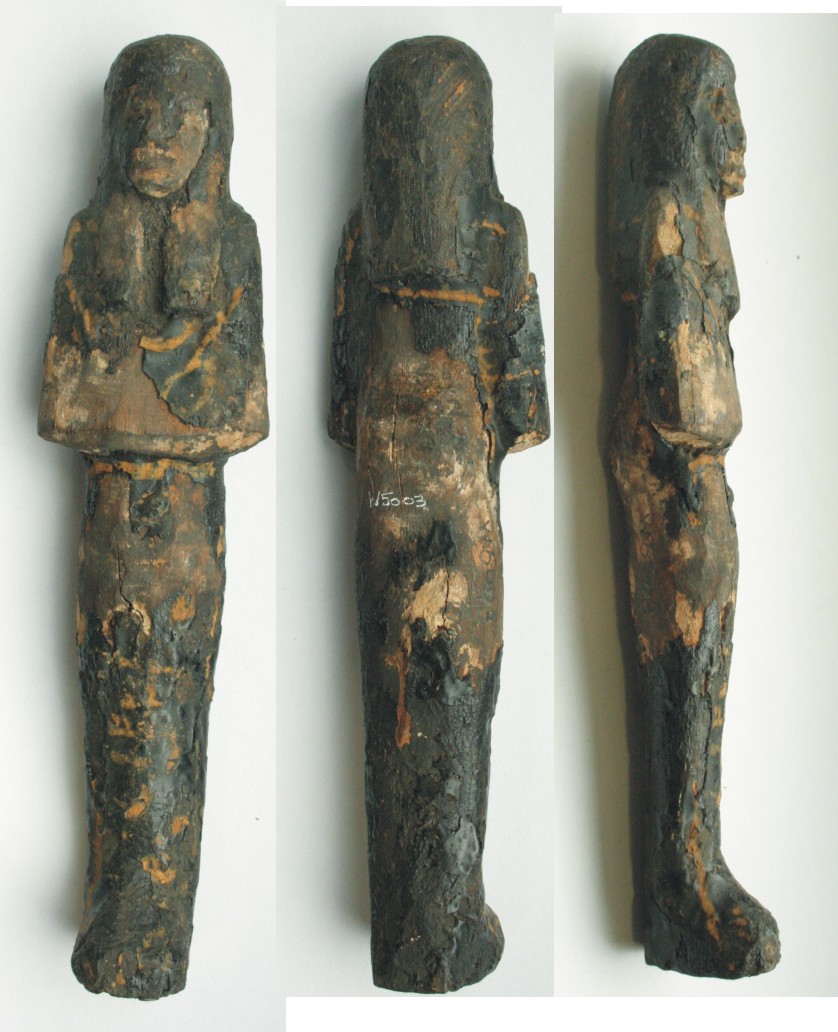W5003
W5003
 New Kingdom wooden mummiform shabti with tripartite wig. It has black and yellow colour coating remaining.
New Kingdom wooden mummiform shabti with tripartite wig. It has black and yellow colour coating remaining.
The remaining paint on this shabti is a black shiny substance with the details picked out in yellow. Black and yellow colours were also commonly used for coffins of the New Kingdom. The black colour is a type of resin. See Serpico (2000, 459-460) for more information on the coating. The black colour was associated with Osiris.
Like other New Kingdom shabtis this one tends to be a little larger than many other shabtis, it is 210mm in height.
This shabti is inscribed with the title ‘Chantress of Amun’, however the inscription is largely unreadable. By the New Kingdom this title, after that of ‘Mistress of the House’ was the most common title for elite women. Such women were lay priests attached to temples (see Onstine 2005 for more information).
Shabtis acted as a substitute for the deceased in the afterlife and most are found in tombs. However, the fact that several are also found in temples suggests that they also acted as substitutes for the deceased in life.
This item was purchased by Wellcome at auction in 1933.
Other shabtis in the Egypt Centre
Other items belonging to women with the title ‘Chantress of Amun’
Further Reading
Onstine, S.L., 2005. The Role of the Chantress (Smayt) in Ancient Egypt. Oxford: Archaeopress.
Serpico, M., 2000. Resins, amber and bitumen in Nicholson, P.T. and Shaw, I., Ancient Egyptian Materials and Technology, Cambridge: Cambridge University Press, 430-474.
Schneider, H.D., 1977. Shabtis. An Introduction To The History Of Ancient Egyptian Funerary Statuettes With A Catalogue Of The Shabtis In The National Museum Of Antiquities at Leiden. Leiden: Rijksmuseum van Oudheden..
Stewart, H.M., 1995. Egyptian Shabtis. Princes Risborough: Shire.